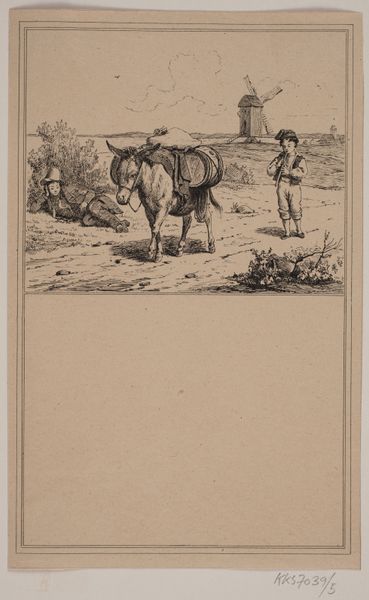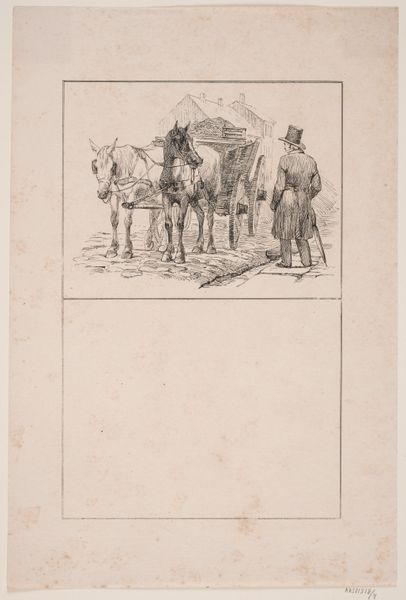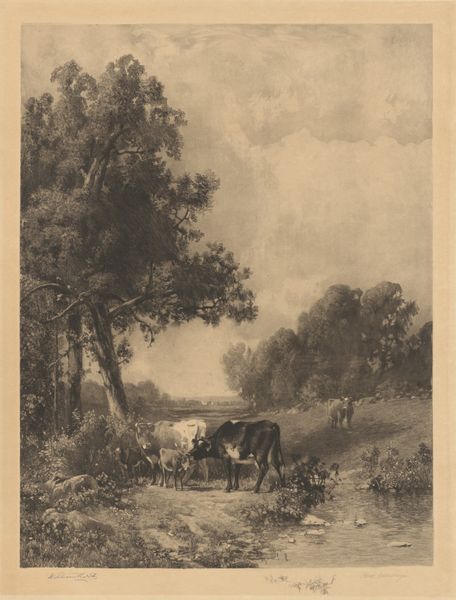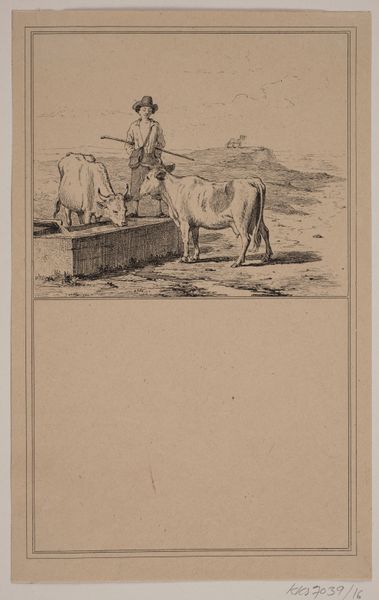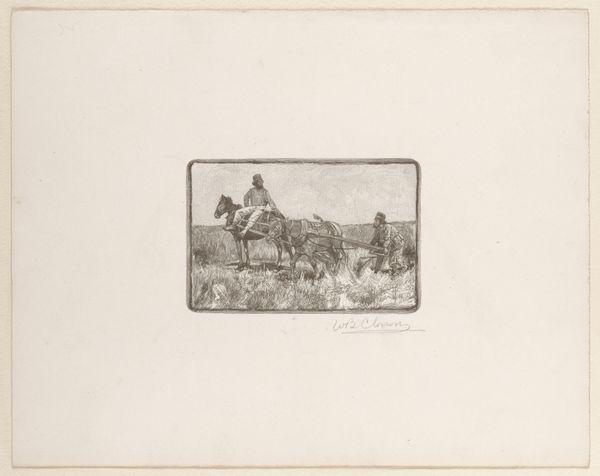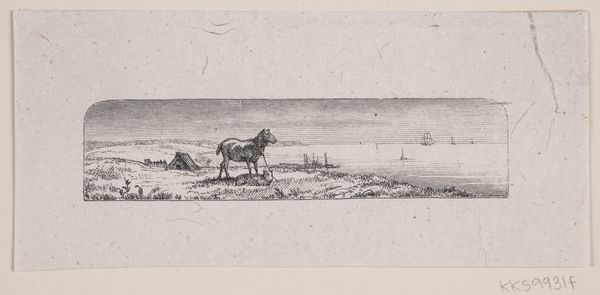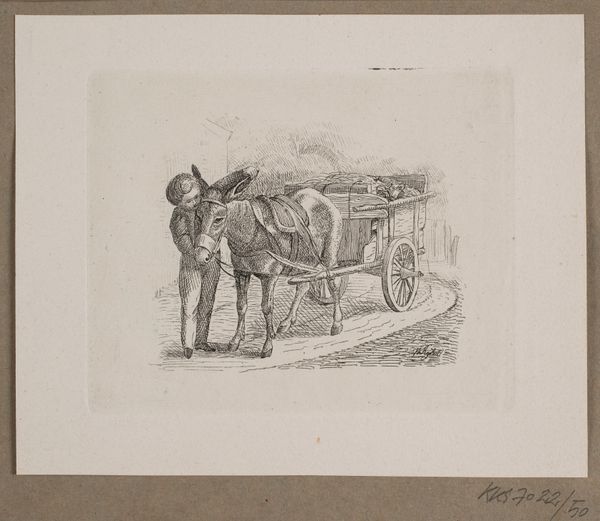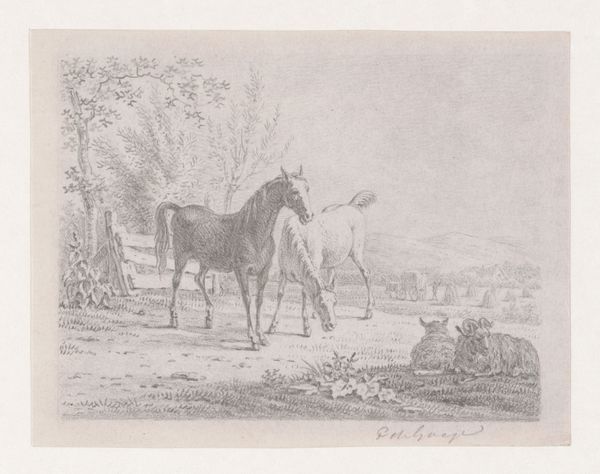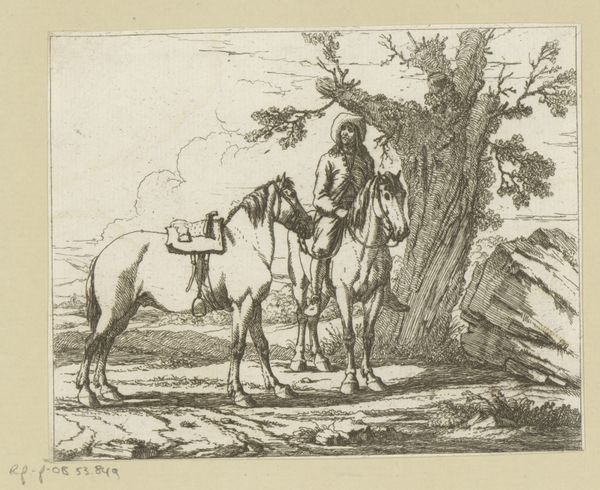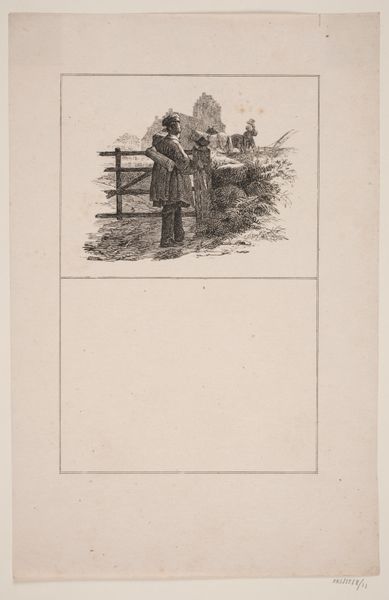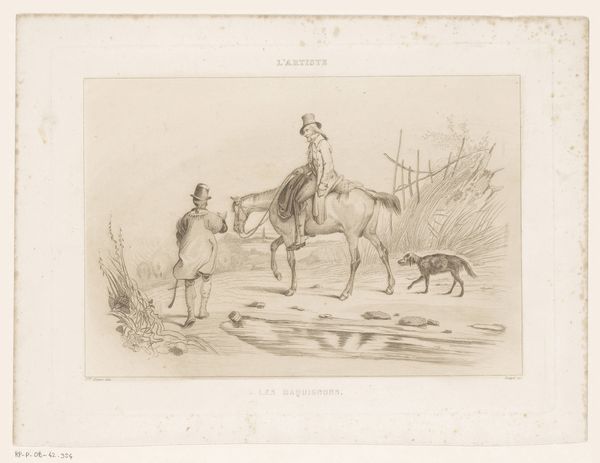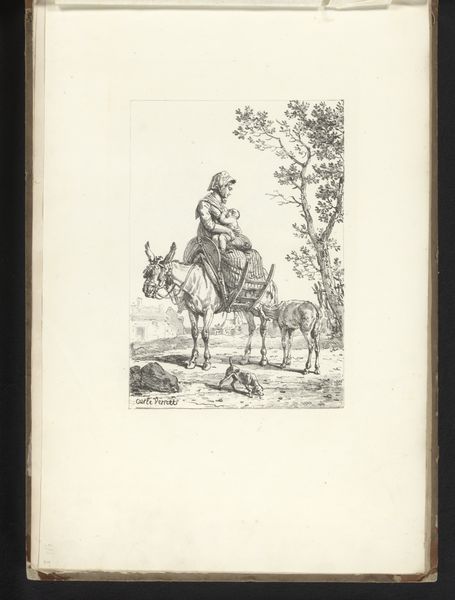
Æslet. Prøvetryk til Chr. Winther og M. Rørbye, "25 Billeder for små børn" 1846
0:00
0:00
drawing, lithograph, print
#
drawing
#
lithograph
#
ink paper printed
# print
#
landscape
#
figuration
#
romanticism
#
line
#
genre-painting
Dimensions: 270 mm (height) x 175 mm (width) (brutto)
This is a trial proof for "The Donkey", made by Adolph Kittendorff as part of a children’s picture book, using a technique called line engraving. The image is created by cutting lines into a metal plate, which are then filled with ink and printed onto paper. The fineness of the lines, and the control Kittendorff had over their placement, gives the print its crispness and clarity. Look closely, and you'll notice the remarkable level of detail, from the donkey’s furry coat to the windmill on the horizon. Engraving is an incredibly labor-intensive process, demanding a high level of skill and precision. The image would have been carefully planned, then slowly and painstakingly etched into the metal. When you look at the two boys and the donkey, consider the lives of working people, particularly children, in 19th-century Denmark. Kittendorff clearly wanted to make images that resonated with the everyday experiences of his young audience. It’s a great example of how a so-called "minor art" like printmaking could have real cultural value.
Comments
No comments
Be the first to comment and join the conversation on the ultimate creative platform.
